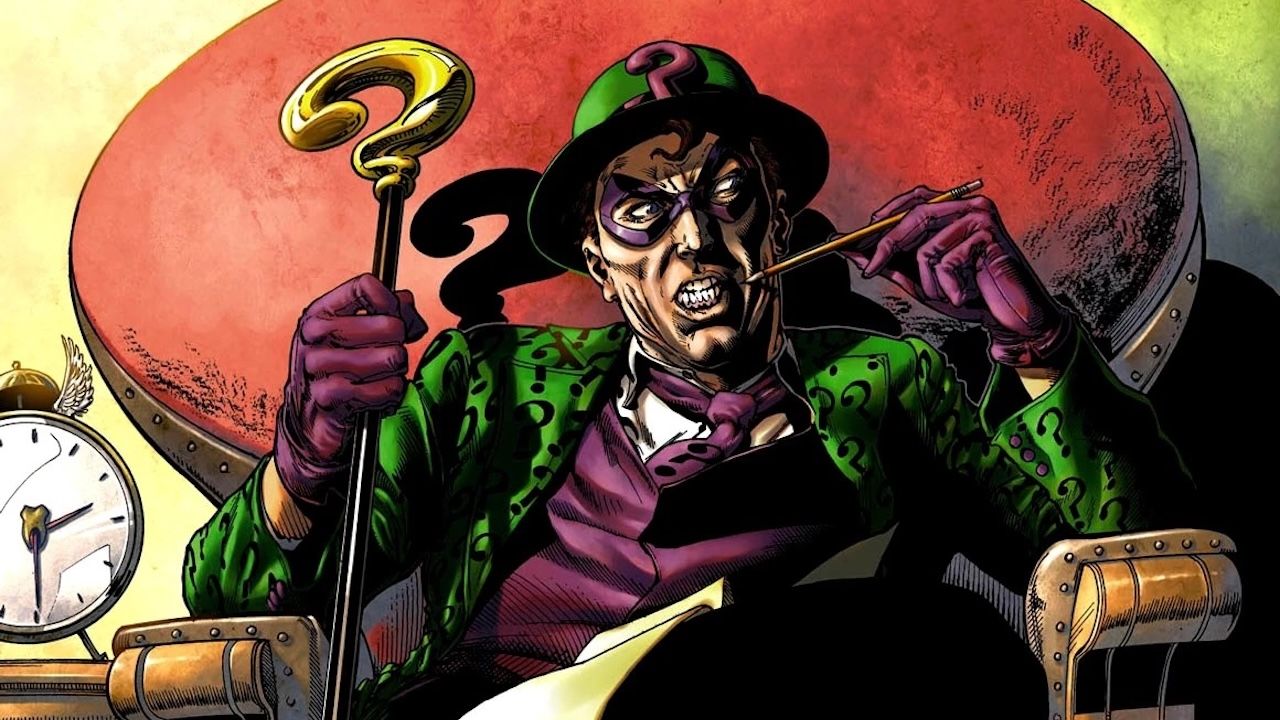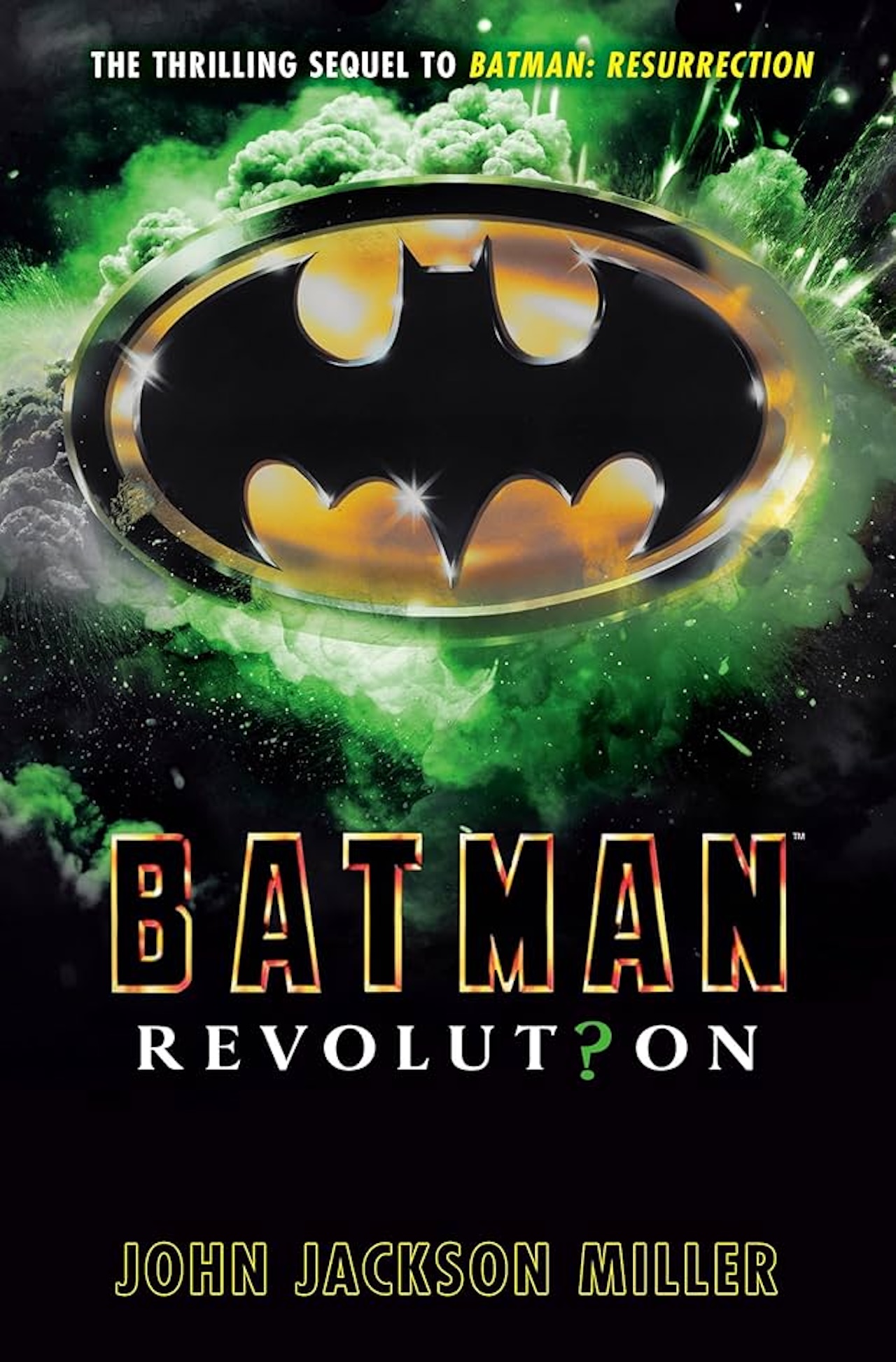
Warning: minor SPOILERS for Batman: Revolution are ahead!
For those who love Tim Burton’s Batman films, the last few years have been fantastic. Michael Keaton returned as Batman in The Flash, and there have been two comic book series, Batman ’89, that continue the story after Batman Returns – conveniently skipping over the movies directed by Joel Schumacher. Plus, last year brought Batman: Resurrection, a novel filling the gap between the first and second Burton films, and it included a great take on the villain Clayface.
The sequel to Resurrection, titled Batman: Revolution, is here, and it features a fresh take on The Riddler—actually, the second new version of the character in this series. I recently spoke with author John Jackson Miller before the book’s release, and he discussed the origins of this new Riddler, as well as his reasons for including two lesser-known villains in the novel.

Continue the story started in Batman: Resurrection with Batman: Revolution, the second part of John Jackson Miller’s two-part Batman saga. Check out the deal here!
How Batman: Revolution’s Riddler Came To Be
A new Riddler has emerged – his name is Norman Pinkus. He works as a copy boy at the Gotham Gazette and creates their ‘Riddle Me This’ puzzle. But secretly, he also assists the Gotham City Police Department by providing anonymous tips and leaving behind subtle clues. Essentially, Pinkus is incredibly intelligent, and writer John Jackson Miller wanted the villain in Revolution to be as intellectually gifted as Bruce Wayne, but without the same wealth and privilege. Miller explained that he wanted a villain who could truly challenge Batman, despite lacking the same resources.
I envisioned a character who mirrored Bruce Wayne – roughly the same age and equally intelligent. The key difference is opportunity. Bruce had every advantage, with support from figures like Alfred and his parents. Our character, Norman, isn’t necessarily unhappy; he’s actually fascinated by learning. However, he faces significant limitations due to his upbringing and lack of resources. This creates a contrast – they end up on opposite sides of the city’s problems, and that’s where the story begins.
Norman Pinkus isn’t entirely new to Batman lore. He briefly appears in the 1989 film Batman as a copy boy at the Gotham Gazette. However, his character was developed further in Batman: Resurrection and Batman: Revolution, which details his evolution from a shy, well-intentioned person into the flamboyant villain he becomes. Like with Clayface in Resurrection, writer John Jackson Miller aimed to give Pinkus’s transformation into the Riddler a tragic backstory. He explains:
Similar to what we did with the Clayface story in the first book, I wanted to portray The Riddler as a sympathetic, tragic figure. The goal was to spend the entire story with him, not necessarily condoning his actions, but gaining a deep understanding of what led him to become who he is.
Readers of the comic book series Batman ’89: Echoes may recall that it introduced its own version of the Riddler, Edward Nigel Maynard, who was a patient at Arkham Asylum. The series acknowledged Maynard’s existence, creating a scenario where two different Riddlers could exist at the same time. John Jackson Miller discovered Maynard while writing Batman: Revolution and worked with Echoes writer Sam Hamm and artist Joe Quinones to ensure the storylines aligned.
Why The Archer And Killer Moth Were Included
Besides The Riddler, the comic series Batman: Revolution also features two other villains who team up with him. One of these is The Archer, a character originally from the 1960s Batman TV show. This version of The Archer is reimagined as a dangerous and unstable serial killer. John Jackson Miller explained his vision for the character as follows:
I needed a believable, street-level villain for Gotham City – someone Batman would regularly fight. This character just seemed to fit, and he ended up being one of the most disturbed I’ve ever created. He’s completely unhinged, definitely not a typical person, and certainly not someone you’d find in public office.
The second villain helping the main antagonist is Killer Moth, who first appeared in a 1951 issue of Batman. He uses technology to fly, and author John Jackson Miller explained his reasoning for including Killer Moth and Archer in the story.
We needed a villain who could truly challenge Batman technologically, someone smarter in that area. In a story like this, we have a lot to cover. While the Riddler is presented as a brilliant mind, we wanted more than just typical henchmen. We didn’t want it to feel like the old 1966 show with everyone in costumes. We needed to create a full world around Batman, filled with both everyday criminals and characters with superpowers for him to face.
To find out what happens to characters like the Riddler, Archer, and Killer Moth in Tim Burton’s Batman universe, you’ll want to read Batman: Revolution. It’s available for purchase now in both physical and digital formats wherever books are sold. Plus, you can stream Tim Burton’s Batman movies with an HBO Max subscription.
Read More
- Mobile Legends: Bang Bang (MLBB) Sora Guide: Best Build, Emblem and Gameplay Tips
- Clash Royale Best Boss Bandit Champion decks
- Best Hero Card Decks in Clash Royale
- All Brawl Stars Brawliday Rewards For 2025
- Best Arena 9 Decks in Clast Royale
- Vampire’s Fall 2 redeem codes and how to use them (June 2025)
- Brawl Stars December 2025 Brawl Talk: Two New Brawlers, Buffie, Vault, New Skins, Game Modes, and more
- Clash Royale Witch Evolution best decks guide
- Clash Royale Furnace Evolution best decks guide
- Clash of Clans Meltdown Mayhem December 2025 Event: Overview, Rewards, and more
2025-10-22 16:52